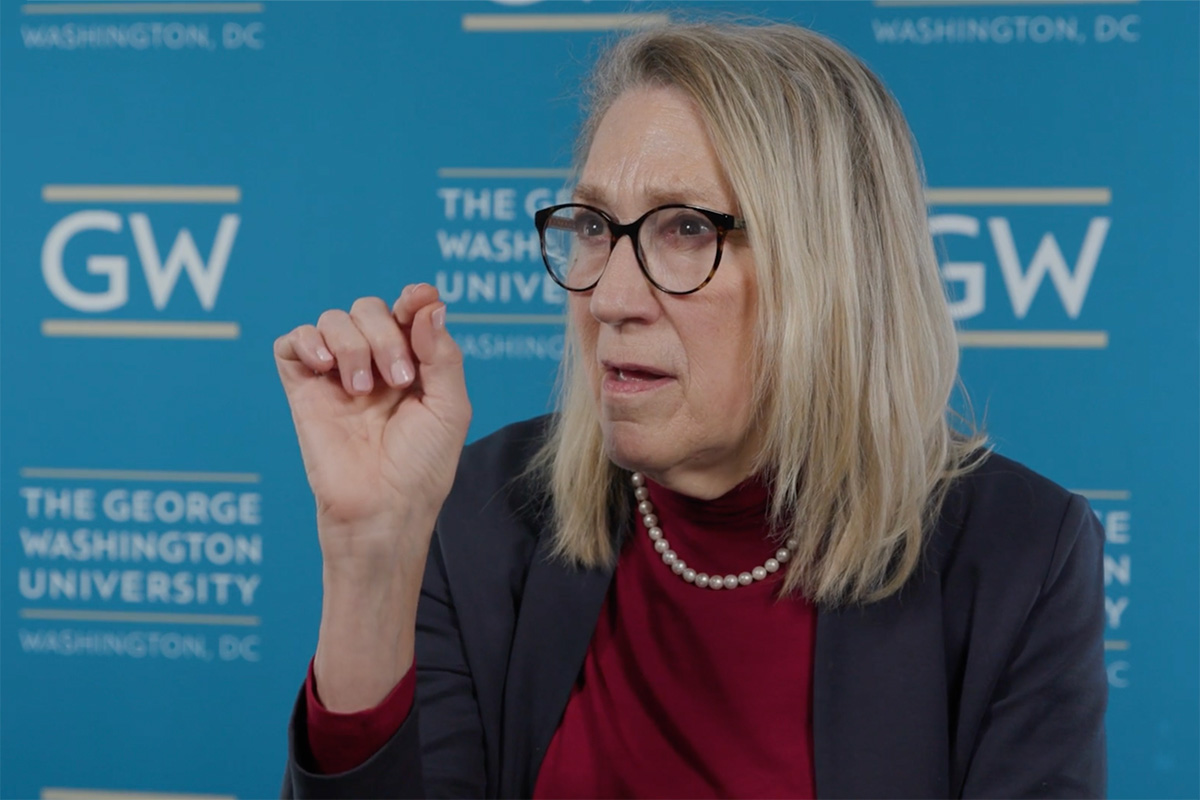A study published Thursday suggests the prevalence of long COVID was 36% among George Washington University students, faculty, staff and other members of the campus community who had tested positive for COVID-19 between July 2021 and March 2022. The study helps shed light and supports other research on this poorly understood condition in which even young, healthy adults can develop prolonged symptoms after infections with COVID-19.
The U.S. Department of Health and Human Services defines “long COVID” as signs, symptoms and conditions that continue or develop four weeks or more after the initial COVID-19 infection. According to the Centers for Disease Control and Prevention, people with long COVID may suffer from a range of symptoms that can include fatigue, fever, cough and brain fog. Public health officials currently believe that long COVID may represent a number of potentially overlapping conditions, possibly with different biological causes, risk factors and outcomes.
Published in the early release section of the Centers for Disease Control and Prevention’s journal Emerging Infectious Diseases, the study, “Post-acute Sequelae of SARS-CoV-2 in a university,” is one of the first to identify potential risk factors for long COVID.
The findings suggest that people who are fully vaccinated had a reduced risk of developing long COVID. Those receiving a booster shot had an even lower risk. Researchers also found that development of long COVID was more likely among those with underlying medical conditions, current or former smokers, females and people who experienced more severe or greater numbers of symptoms during the initial illness.
3 Questions with Dean Lynn Goldman from GW Media Relations on Vimeo.
Led by Megan Landry, professorial lecturer of prevention and community health at GW Milken Institute School of Public Health and project director of GW’s Campus COVID Support Team, the researchers examined long COVID from a sample of 1,338 COVID cases among members of the university between July 2021 and March 2022. At that time, GW had a rigorous COVID safety protocol that required regular COVID testing for all on-campus faculty, staff, students and others. In support of the campus community, Landry and her team conducted interviews with each person who tested positive for COVID-19 at the time of their initial illness.
All university community members provided informed consent to participate in the GW COVID-19 surveillance program. Data used in the study was de-identified and no individual health information was published.
During the study period, GW had mandated vaccines such that members of the community were required to be “fully vaccinated” by August 2021 and to have received their first booster by March 2022. Bivalent boosters were not available during this time. Researchers followed up with all who tested positive and asked questions about symptoms of long COVID at least 30 days after the positive test result.
“Our campus COVID public health testing effort included all students, faculty, staff and others on campus—a mostly young and healthy population,” said Milken Institute SPH Dean Lynn R. Goldman, senior author of the study. “Yet we saw prevalence rates of long COVID symptoms that are consistent with other studies that have been published in the U.S. Our findings also are consistent with previous research underscoring the importance of getting the COVID vaccine and staying up to date with boosters–which protect against a serious initial illness as well as developing long COVID.”
Long COVID is not well-characterized, the authors point out. They say more research must be done to examine its prevalence in other populations and to find out why some people develop it weeks or months later, while others recover fully from the initial illness.
“Understanding long COVID among university members is imperative to support those struggling with ongoing symptoms,” Landry said. “The findings from this study and others highlight the need to better support people with long COVID. Additionally, we again see the importance of reducing chronic disease and eliminating tobacco use. Prolonged symptoms of COVID-19 are yet another one of a series of adverse health impacts that results from high rates of chronic disease and [from] smoking.”
GW students can access support for long COVID at the Student Health Center. GW faculty and staff with symptoms of long COVID can contact their primary care provider or the GW Occupational Health Program.
Resources on long COVID can be also found by visiting the CDC’s website or by contacting the state or local health department. Additional resources for long COVID support include the COVID Recovery Program at MedStar in Washington, D.C., and Johns Hopkins Medicine in Baltimore.



